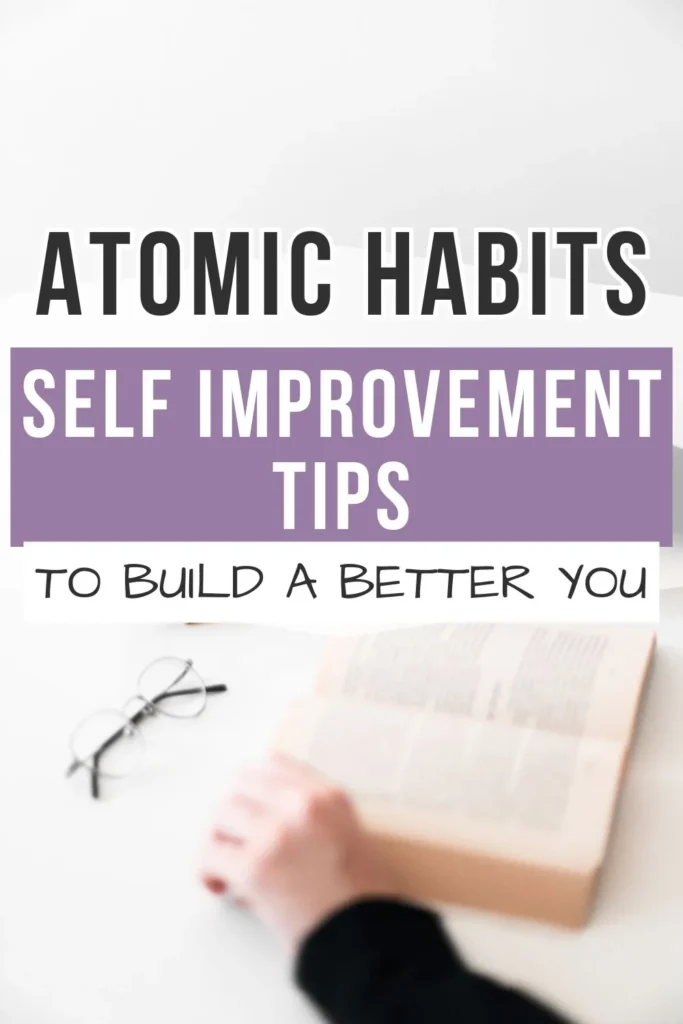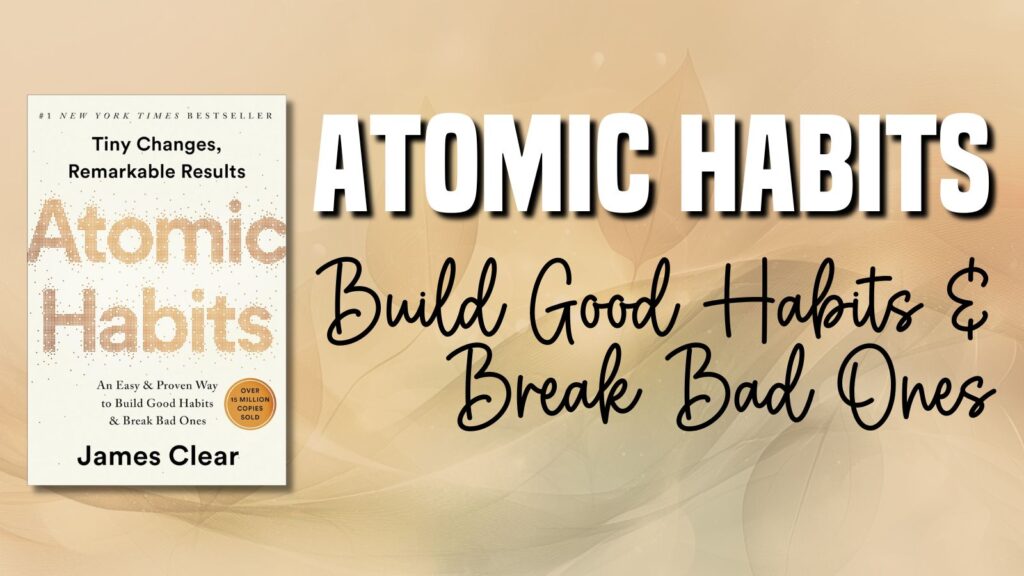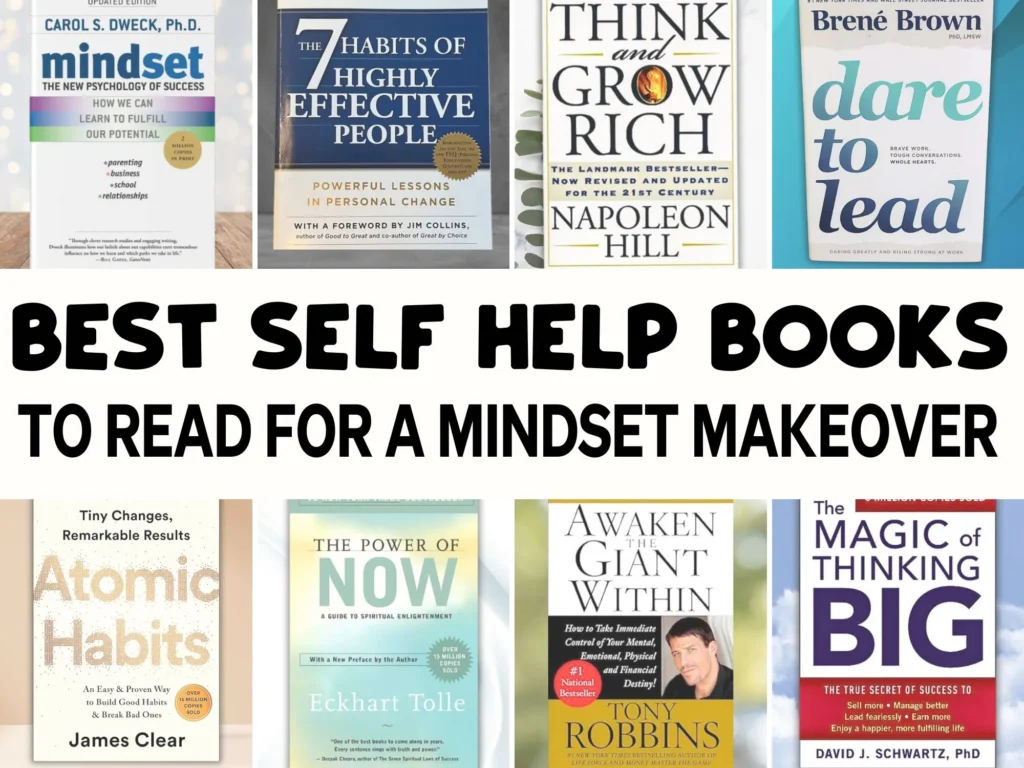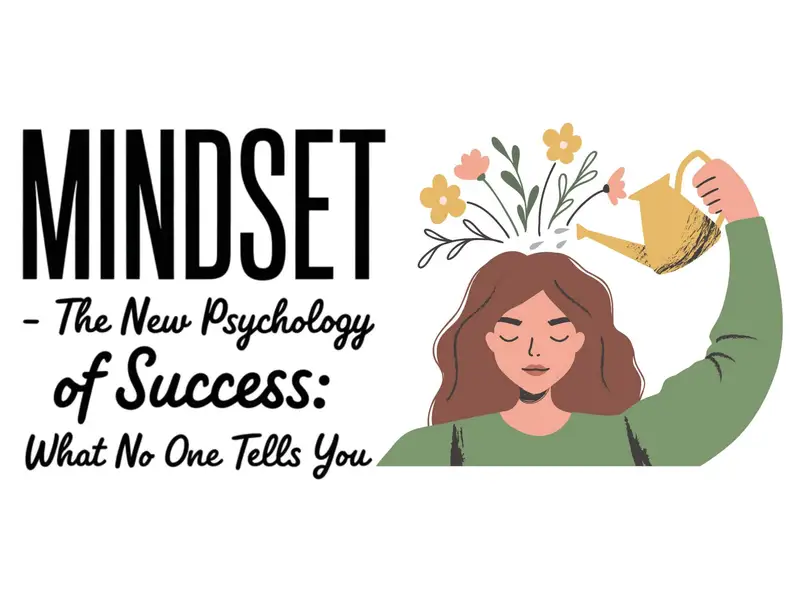Be honest—how many times have you sworn this would finally be the year you “get your life together”? You know the drill: you set grand New Year’s resolutions, buy that $30 water bottle for “hydration motivation,” and download five habit tracker apps.
And yet… two weeks later, you’re scrolling TikTok at midnight with a half-eaten bag of chips on your lap, wondering where it all went wrong.
Same, friend. Same.
Enter Atomic Habits by James Clear—a book that doesn’t yell at you to “just be more disciplined” but instead shows how tiny changes can snowball into life-changing results. And let me tell you, it’s not just hype. I’ve tried it, and it’s the first time a “self improvement” strategy didn’t make me feel like a complete failure.

Why Tiny Habits Actually Work (No Willpower Required)
Here’s the genius behind Atomic Habits: Clear argues that success isn’t about massive, unsustainable effort. Instead, it’s about small, consistent changes that compound over time.
Think about this: if you improve by just 1% every day, by the end of the year, you’re not just 365% better—you’re 37 TIMES better. (Cue mind-blown emoji.)
I used to believe I had to completely overhaul my life overnight. New workout routine! Strict diet! Wake up at 5 AM! It always ended in tears and chocolate. Now I know better.
My First Atomic Habit: Making My Bed
It sounds silly, but I started with making my bed. Why? Because it took 60 seconds, and I couldn’t talk myself out of it. That tiny win gave me an unexpected boost: I felt like someone who had her life together.
Before I knew it, I was drinking more water, keeping my phone out of my bedroom, and journaling at night. I didn’t force any of it—it all felt… natural.
This is Clear’s magic: habits shape your identity, and your identity shapes your habits.
The Habit Loop: Your Brain’s Sneaky Programming
Clear explains that every habit—good or bad—follows the same four-step loop:
- Cue – Something triggers you (like seeing your sneakers).
- Craving – You get the urge (wanting that post-run endorphin rush).
- Response – You act (putting on the sneakers and jogging).
- Reward – You feel good (yay, dopamine!).
The trick is to design your habits so the loop works for you, not against you.
For example, I moved my vitamins next to my coffee maker. Now I never forget them because the coffee smell triggers the habit.
Systems > Goals (Yep, I Said It)
This one hit me like a ton of bricks. Goals are great for direction, but they don’t change your behavior. Systems do.
❌ Goal: Get fit.
✅ System: Lay out workout clothes every night and commit to 5 minutes of exercise.
❌ Goal: Read more.
✅ System: Keep a book on your pillow and read one page before sleep.
I used to write endless goal lists in pretty planners. Now I focus on systems—and guess what? Stuff actually gets done.
Making Bad Habits Harder (Because Self-Control Is Overrated)
Let’s be honest: relying on self-control alone is like expecting your Wi-Fi to work perfectly during a storm.
Instead, Clear recommends designing your environment:
🚫 Want to stop snacking? Hide the candy in a high cabinet.
🚫 Want to cut down on Netflix? Log out after every session.
✅ Want to drink more water? Keep a full glass by your laptop.
I went hardcore and started charging my phone in the kitchen overnight. At first, it felt weird, but within a week, I stopped doom-scrolling in bed. (Bonus: I’m sleeping better than ever.)
My Favorite Self Improvement Tips from Atomic Habits
If you’re overwhelmed and don’t know where to start, here are my top takeaways:
💡 Shrink the habit: Start ridiculously small. One push-up. One sentence in your journal. One deep breath.
💡 Habit stacking: Pair a new habit with an existing one. “After brushing my teeth, I’ll floss one tooth.”
💡 Make it satisfying: Reward yourself in some way (but maybe not with cake every time).
💡 Track it visually: I love crossing off habits on a calendar—it’s weirdly addictive.
But Wait… What About Big, Life-Changing Goals?
Some people argue that tiny habits are too slow. They want instant transformation.
I get it. But ask yourself this: how’s that been working so far?
For me, every “big push” ended in burnout. Tiny habits, on the other hand, feel almost… effortless. And isn’t that the dream?
How to Make Habits Stick (Even When You’re Lazy and Distracted)
🙋♀️ True story: I once tried a “miracle morning” routine that included meditation, journaling, yoga, and reading—all before 7 AM. I lasted three days.
Here’s what worked instead:
- Start so small you can’t say no. (Two minutes of meditation.)
- Tie habits to your identity. (“I’m the kind of person who meditates daily.”)
- Make it fun! Play music, use colorful pens, or reward yourself with a cute sticker chart. (Don’t judge me.)
Related Posts for Your Personal Growth Journey
✨ How to Build a Personal Growth Plan in 6 Simple Steps
✨ Mindset: The New Psychology of Success
✨ The Best 9 Self-Help Books to Read for a Mindset Makeover
Ready to Build Your Atomic Habits?
What’s one tiny habit you could start today? Put your phone in another room? Drink a glass of water? Go for a five-minute walk?
Share your idea in the comments—or tell me on Pinterest. You never know who you might inspire.
Remember: you don’t need to change everything overnight. Start small. Be consistent. Your future self will be so proud.
🌟 Quick Challenge: Pick one habit. Do it for 2 minutes. Repeat tomorrow. That’s it. You’re officially building a better you.



